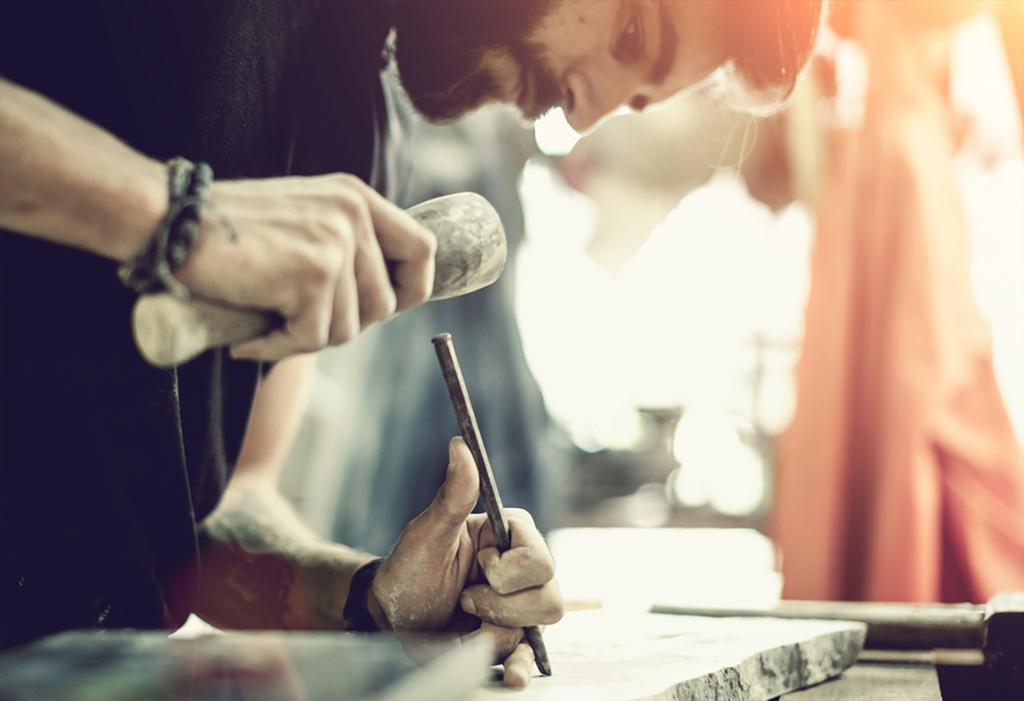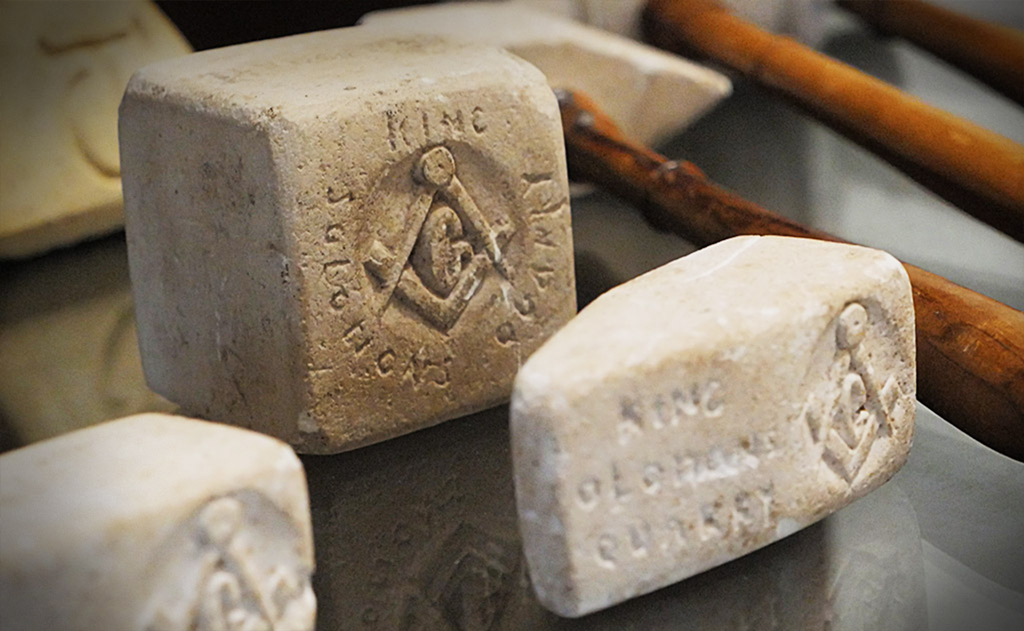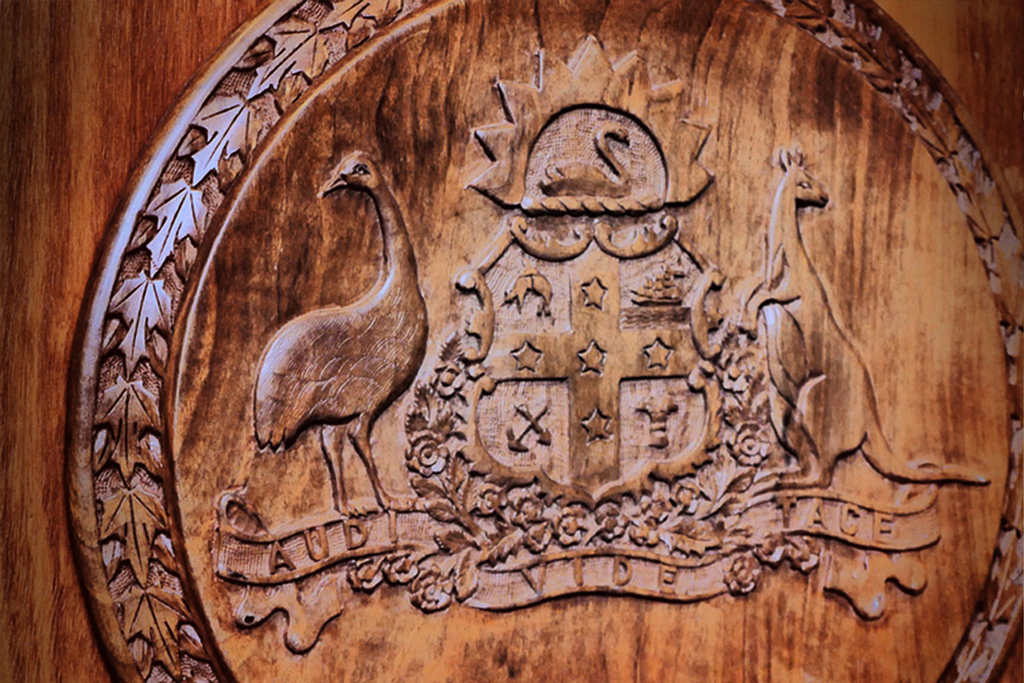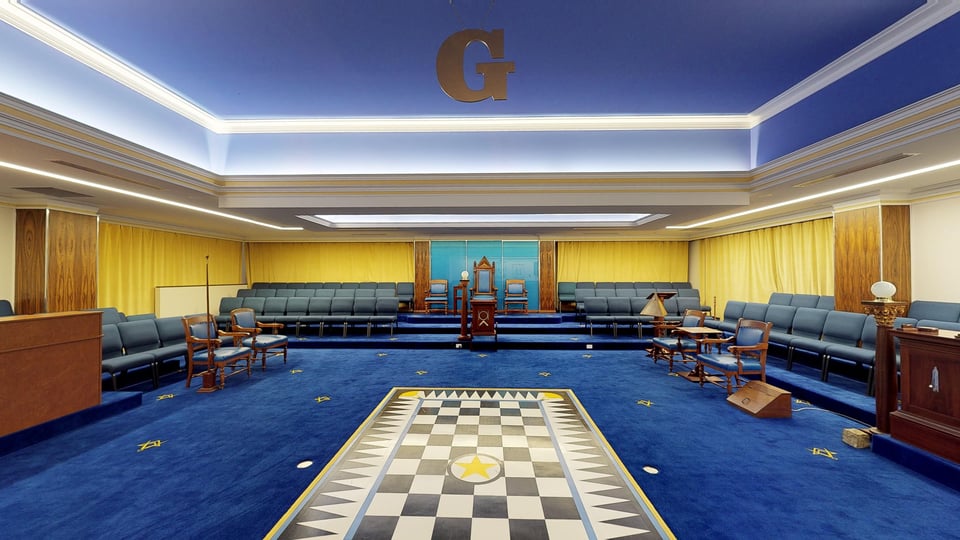Freemasonry an Introduction
It is because of the antiquity and the resulting mystery surrounding our origins that Freemasonry has developed into such a unique, complicated and mysterious organisation. Many myths surrounding the fraternity have evolved from the reluctance of members to explain the ancient systems of moral education to those they feel would be inclined to ridicule them. In some instances, it was also due to a misguided impression that some people were simply not of sufficient intellectual or moral character to understand or appreciate the aims and objectives.
In order to avoid conflict or embarrassment to either party, the Freemasons of yesteryear felt it better to say nothing. The ceremonies themselves are not strictly secret but they are of such a special significance to every Freemason that they are kept private. Every Freemason remembers with great affection the uniqueness of his initiation ceremony and wants every new candidate to experience the same joy of discovery and sense of privilege.


The Origins
The exact origins or beginnings of Freemasonry are impenetrably shrouded in the mists of time. Its history extends back into the past to a time when literacy was confined to the aristocracy and the church. Written records of lodge meetings were extremely rare or in the vast majority of cases totally non existent prior to the formation of the United Grand Lodge of England in 1717.
Within the great international brotherhood of Freemasonry itself, the question of the beginnings is the most widely researched and passionately debated topic among Masonic scholars and almost every other member of the fraternity. Most are of the opinion that Freemasonry evolved from the lodges of operative stonemasons that spent their lives building the great cathedrals and castles of Europe in the Middle Ages.
Literacy was almost non-existent and so the jealously guarded secrets of the mason’s trade were passed to worthy apprentices verbally. In addition to imparting the skills and trade secrets to the apprentice, the master stonemason was also responsible for the moral development of his charges. To demonstrate these moral lessons the stone mason used the most precious possessions he owned; the tools of his trade. Each of the tools of the masons trade is ascribed a special moral significance.
The Square
The square represents morality, the level equality, the plumb rule uprightness. The same lessons of morality using the same operative stonemason’s tools are still used to this day in Masonic ceremony. One of the alternative theories that is gaining in popularity is that the origins of Freemasonry began with the Knights Templar.


The Objectives
In modern times the requirements for being a Freemason centre on having good morals and values, a desire to support the community and a drive for self development. In meeting these requirements Freemasonry accepts men of all faiths, religions, races, nationalities and from every walk of life. Being a good man is the crux of the organisations teachings and many Freemasons around the world including Western Australia have adopted the slogan “making good men better”.
Historically Freemasons were seen as a threat to various religions and religious groups due to a lack of accurate information. In an attempt to show that Freemasonry was not a threat the fraternity required all prospective members to have a belief in a ‘supreme being’, demonstrating clearly that Freemasons were not atheists, in a time when religions held extremely significant political and physical power. Freemasons are in fact discouraged and taught not to speak of two divisive topics, religion and politics at their meetings. Desiring harmony and inclusiveness Freemasons meet as equals regardless of any external factors.
The Lodge Meeting
A Freemasons’ lodge meeting can be roughly divided into three parts; business, ceremonial and festive.
Business
The business component is much the same as any club or association, the minutes of the previous meeting are passed, the Secretary reads the correspondence, the Treasurer gives his report and general business is conducted.
Ceremonial
The ceremonial component is generally the working of one of the three Masonic degrees, which represent the three levels each member works his way through. These are commonly referred to as the first, second and third degrees or the Entered Apprentice, Fellow Craft and Master Mason’s degree.
Each of these ceremonies is like a play with the candidate for the degree taking centre stage. A number of the lodge members have walk on speaking parts and the Master of the lodge has the lead role. Each of the speaking parts is a lesson on morality, good conduct both within, and outside the lodge and many utilise the tools of the old operative stonemasons to illustrate the lesson in exactly the same way as they were in ancient times. It’s serious, solemn and as previously alluded to, rooted in antiquity. It is also fascinatingly complex and intricate which is why Freemasons never tire of performing and taking part in these beautiful ceremonies.
Festive
The festive component is a meal shared by all the brethren after the ceremonial has been completed. There are lots of toasts, speeches, clapping, singing and music but the whole banquet is conducted with both light heartedness and dignity. Some lodges have a catered five-course dinner while other lodges prefer a lighter style of supper. Some lodges serve alcoholic beverages and some lodges do not.
Take a Tour of a Lodge Room Below
Freemasonry An Introduction
Mysterious origins to moral foundations
What's the big secret?
Introduction
Freemasonry’s long and enigmatic history has shaped it into a complex and mysterious organisation. This mystery has stemmed from members’ reluctance to share their traditional moral teachings, fearing ridicule or believing some individuals lack the necessary intellectual or moral capacity to grasp their goals. Each Freemason cherishes the memory of their own initiation, desiring that new members equally enjoy discovering and feeling privileged by the experience.
The origins
The origins of Freemasonry are deeply obscured by history, tracing back to a time when only the aristocracy and church were literate. Before the United Grand Lodge of England was established in 1717, written records of lodge meetings were exceedingly rare or nonexistent. Within Freemasonry, the debate over its beginnings is fervent and widespread among Masonic scholars and members alike. Many believe that Freemasonry originated from the medieval lodges of stonemasons who constructed Europe’s magnificent cathedrals and castles.
The objectives
Today, becoming a Freemason is primarily about upholding strong moral values, supporting the community, and pursuing personal growth. Freemasonry welcomes men from all faiths, races, and backgrounds, emphasising the importance of being virtuous. To alleviate fears and demonstrate that they were not atheists, the fraternity mandated that all candidates must believe in a ‘supreme being’. Freemasons are advised to avoid discussing religion and politics during their meetings to foster unity and equality among all members.
A Freemasons Lodge Room
Take a Virtual Tour
Step inside the world of Freemasonry with our interactive virtual tour of a typical Lodge Room. Discover the rich symbolism and architectural elegance that define these sacred spaces. As you navigate through the room, click on points of interest to learn more about the artifacts that each carry their own story and significance. Enjoy exploring at your own pace and uncover the mysteries that lie within the walls of a Freemasons Lodge Room.
Freemasonry Today
A modern fraternity
The Lodge meeting
The Lodge Meeting can be roughly divided into three parts; Business, Ceremonial and Festive.
Business
The business aspect of Freemason Lodge meeting is similar to any other club or association. This includes approving the minutes from the previous meeting, the Secretary presenting correspondence, the Treasurer delivering a financial report, and conducting general business matters.
Ceremonial
The ceremonial part of Freemasonry involves one of three degrees, corresponding to the levels members progress through: the Entered Apprentice, Fellow Craft, and Master Mason degrees.
In these ceremonies, which resemble theatrical plays, the candidate is the focal point, and various lodge members participate with speaking roles. These ceremonies are serious and solemn, deeply rooted in tradition, yet fascinating in their complexity and intricacy, which is why Freemasons consistently enjoy participating in and performing these rites.
Festive
The festive component of Freemasonry features a meal that all members share after the ceremonies. This banquet includes numerous toasts, speeches, clapping, singing, and music, blending lightheartedness with dignity. The style of dining varies among lodges, with some offering catered five-course dinners and others preferring lighter suppers. Additionally, some lodges serve alcoholic beverages, while others do not.
 ►
Explore 3D Space
►
Explore 3D Space